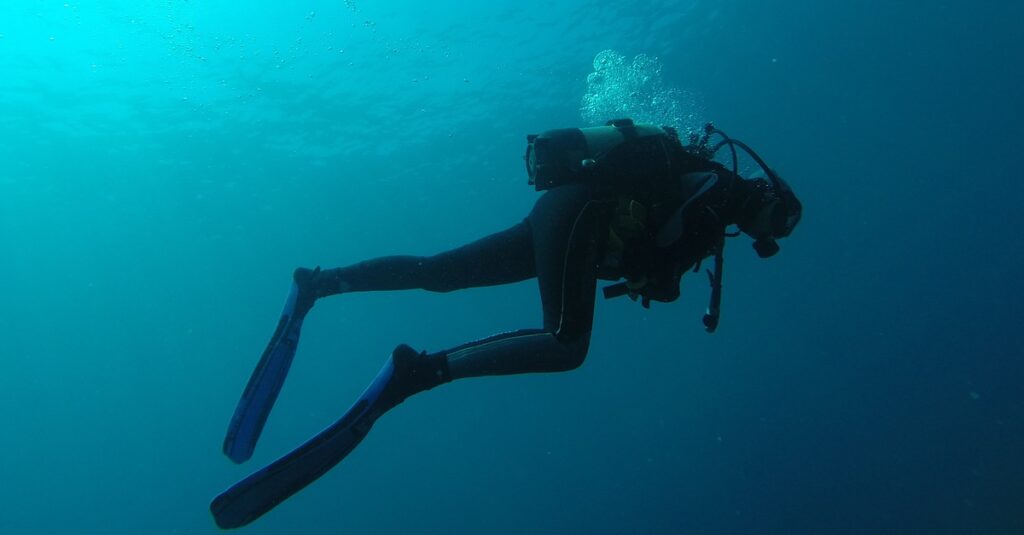

You can scuba dive with a drysuit, but this is usually reserved for diving in cooler temperatures. Drysuits are more expensive, bulkier, and have a higher learning curve, so most divers use wetsuits until they need to change.
Scuba diving with a drysuit is common practice, but it’s not for everyone. Keep reading to learn how to choose between a wetsuit and drysuit and what to expect when using a drysuit.
Is a Wetsuit or Drysuit Better for Scuba Diving?
The choice between wetsuits and drysuits depends on;
- The temperature of the water you’re diving in
- Your comfortable range of motion
- Your budget/ willingness to invest
Both work well, but they’re often used in different conditions.
Water Temperature
Wetsuits keep you warm in the water, using your body as the source of heat. Their closed-cell foam construction traps thousands of tiny bubbles that use your body warmth to heat a thin layer of water held against your skin.
Wetsuits come in varying thicknesses that allow you to customize the feel and level of warmth you get.
Drysuits are bulkier than wetsuits, and they have room for insulating layers beneath the suit. They also keep you completely dry, which feels nicer when you’ve finished a dive in cold water.
Range of Motion
Because wetsuits are thinner and less bulky, you should expect a freer range of motion using one. You even have a few options that don’t extend down your limbs, allowing more movement around your shoulders, elbows, and knees.
Drysuits, which are bulkier, are harder to move in. They crease more easily, and you need to accommodate the extra bulk. They also create more drag, so it can be harder to move quickly through the water.
Cost/ Value
Drysuits cost more, but they also last longer. For the higher price, you can get a higher quality suit that works in more environments and has a more complex construction.
YOu can always start out with a wetsuit and switch it up, but this may cost more in the long run.
How Do Drysuits Keep You Warm?
Drysuits keep you warm by:
- Preserving your body heat in the air
- Keeping all water out of the suit
- Allowing more insulating layers under the suit
Drysuits feature waterproof seals at the neck, wrist, and ankles. These, along with a completely waterproof construction, do not allow water into the suit at all.
This keeps your body, as well as whatever you want to wear to keep warm and dry for the duration of your dive.
It’s important to check on these seals regularly to ensure there are no issues. Even a slight break in the seal comprises the entire suit, and it won’t offer you proper protection in the water.
Can You Swim in a Drysuit?
Swimming in a drysuit would be difficult at best, and the suits are not designed with this in mind.
The suit itself can be awkward to wear, and you likely would not be able to manage the deft maneuvers needed for swimming as you feel like you have bags on your arms.
While this depends on the material (crushed neoprene feels more like wet jeans), drysuits create too much drag for regular swimming techniques. You really need fins and training to get anywhere while wearing a drysuit.
Another issue to consider is how buoyancy works while wearing a drysuit. Before you can even think about navigating, you need to learn how to regulate the air in the suit. Navigating the inflator and exhaust valves requires a bit of a learning curb, and after that you find that the beauty of the suit is not in its swimmability.
References
https://www.lucasdivestore.com/en/blogs/blog/diving-with-a-dry-suit-for-beginners/
https://www.scuba.com/blog/scuba-gear/what-is-the-difference-between-a-wetsuit-and-a-drysuit/
